Network connectivity methods like ethernet cables, Bluetooth connections, mobile connections, etc., are used in enterprises to help them run business processes.
The word “network connectivity”, is pretty self-explanatory. It describes the process of connecting various components of a network, its structure, and how well the parts are connected to one another.
Looking at the increasing security and data protection risks, network connectivity also involves maintenance workers and network administrators to ensure organizational security and network reliability.
This helps protect the organizational network from attacks, preserve data, and prevent reputational damage.
In this article, I’ll explain various network connectivity methods to help you choose the best one for your organization.
Let’s go right in!
What Is a Network?
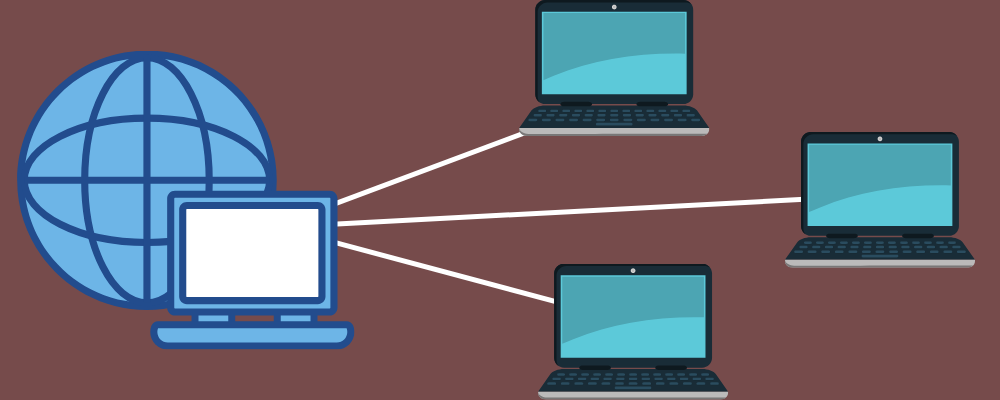
A network is a simple term that describes the link between two or more systems to share their resources effectively, exchange files, and perform other functions. It is a collection of servers, network devices, mainframes, computers, peripherals, and more.
In other words, a network is defined as the link between two or more computer systems, either by a wireless connection or a cable. Thus, to ensure optimum network connectivity, you must understand various methods that an enterprise can use to connect network devices to other systems.
What Is Network Connectivity?
Network connectivity is a process that enables you to collect, access, utilize, and share data across your company. It connects multiple parts of the network via access points, gateways, and routers.
For example, applications or websites need to communicate with each other to complete a certain process like fulfilling transactions. It also helps balance your resources during installation.
To activate effective communications, application programs and processors must support some common rules. Application programs follow various programming languages, and processors have multiple operating systems. Also, the location of each may vary. Therefore, a physical connection between those systems must be established.
Network connectivity works with various methods that enable better connection and speed. It uses various devices and equipment connecting at least two segments of the cable. Here, complex devices serve two opposite purposes:
- Used to divide the large networks into subnets or segments
- Used to combine the small networks into a large network or internet
However, less complex connectivity devices do neither. These devices are generally used as connection points for the systems on a network to amplify networked computers’ signals that extend the distance where transmissions could be sent.
IT professionals, including network analysts and network administrators, refer to connectivity as the single piece of the network puzzle. For example, vehicular networks and Ad hoc networks are the new kinds of networks that work on multiple connectivity models.
Moreover, network connectivity also employs network admins and security professionals to secure data, devices, and networks. Additionally, you can test your network connectivity between the two endpoints easily with ping commands or by utilizing Linux, such as telnet, ncat, wget, Nmap, curl, and more, and troubleshoot network issues.
Difference Between Wire-Based and Wireless Connectivity Solutions
Wire-Based Connectivity Solutions
Wire-based connectivity refers to the transmission of information over a wireline communication that includes cable television, internet access through Ethernet cables, and fiber-optic communication. This solution is used among many enterprises and offers many benefits.
Coaxial cable, fiber optics, and twisted pairs are the most common wired networks used across the globe. Wired configuration maintenance is also easy as it uses Ethernet cables to communicate between PCs. For a small network, you can use a single router to connect all the devices, but large wireline connectivity involves multiple switches or routers for their work.
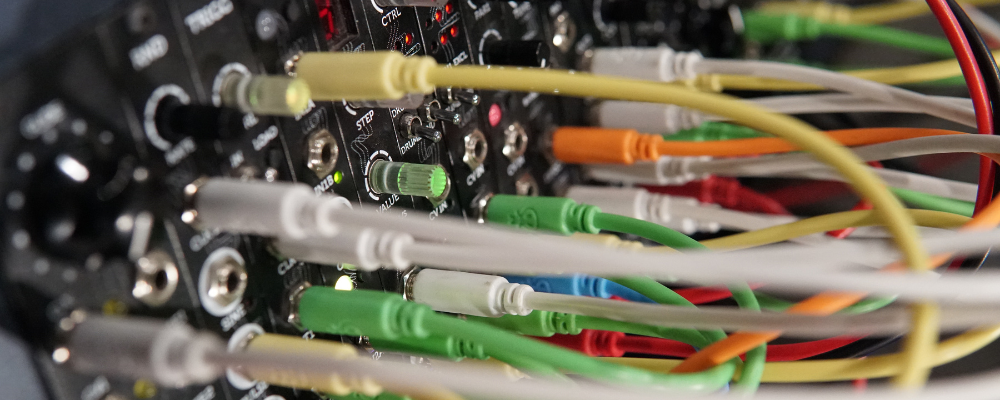
Here, you only need to plug an Ethernet cable into the computer and plug the other end of the cable into the hub’s Ethernet ports. Now, just set up a connection between the hub and computer to enjoy reliable and fast internet.
Various advantages of using wire-based connectivity are:
- Reliability: When a wired network is configured properly, it provides reliability. Once the Ethernet and switches are installed properly, the end result will be extremely stable.
- Visibility: Additional wired networks can’t view your connection. Hence, there is no interference in the connection at the same time.
- Stability: A perfect wire-based connectivity offers stability which means a stable connection throughout your work.
- Security: Network connectivity, when configured with essential security applications and firewalls, stays protected from unwanted access.
- Cost: Ethernet cables, switches, hardware, and routers are relatively cost-effective compared to wireless technology.
- Speed: With advanced technology, data speeds can improve continuously. In a wired connection, there is no space for voids resulting in speedy access.
Wireless Connectivity Solutions
Wireless connectivity refers to the data transmission or telecommunication between network devices without any wires. Here, electromagnetic waves work as an invisible cable that carries signals over the data communication path.
Bluetooth, WiFi, RFID, Cellular, Zigbee, and more are some commonly used wireless technologies. Wireless connectivity allows enterprises to access any data from any location without getting disconnected from the network. Since traditional networks often fail to offer productivity and teamwork, wireless network connectivity comes into the picture.
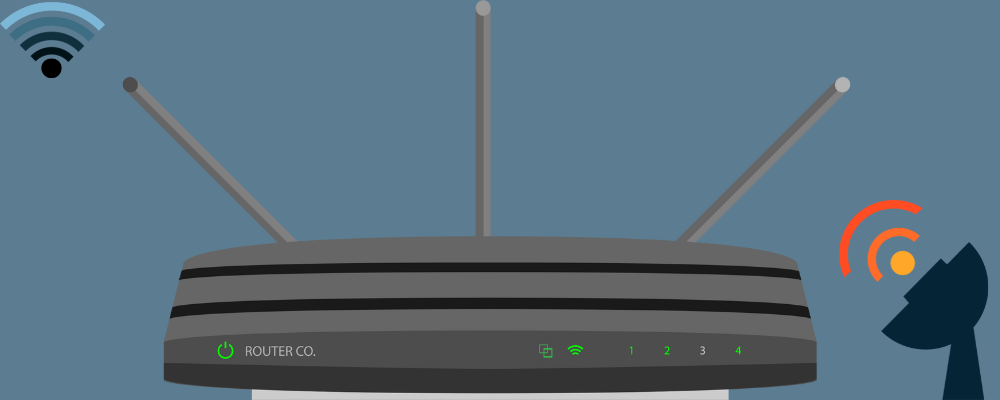
The world is becoming more mobile in the fast years. To address a wide range of challenges, the conventional way of networking is not just sufficient. When you want to connect through a wired connection, you are stuck in a fixed place.
But using wireless connectivity eliminates that boundary and gives you the freedom to access and roam anywhere without disconnecting your connection. The advantages of using wireless connectivity are:
- Easy accessibility: Wireless connection doesn’t require any cables or wires to communicate. Hence, users can move anywhere while connecting to the network. This results in increased productivity.
- Flexibility: Users can get easy access to the networks from any location, which offers convenience. You can also easily update the network to meet the latest configurations.
- Enhanced scalability: You can easily configure the wireless connection to meet the specific demands of the applications.
- Wider reach: With wireless connectivity, you can expand the connectivity to any place in the organization where wire or cable is not accessible.
- Efficiency: You will get improved, faster data transfers between different systems with wireless technology.
Let’s now discuss different network connectivity methods you can use to connect systems.
Ethernet Cables
Ethernet cables come under a wired connectivity method, allowing you to physically connect your computer to a router to access the internet connection and interact with your shared network resources in your enterprise.
In short, an ethernet cable is a cord or a wire that runs from a network switch, modem, or router to your computer and gives access to the LAN or internet access. Here, you need to connect one end of the cable to the router or modem and the other end to your computer. Although Ethernet cables may seem restricting or clunky, they improve the stability and speed of your internet connection.
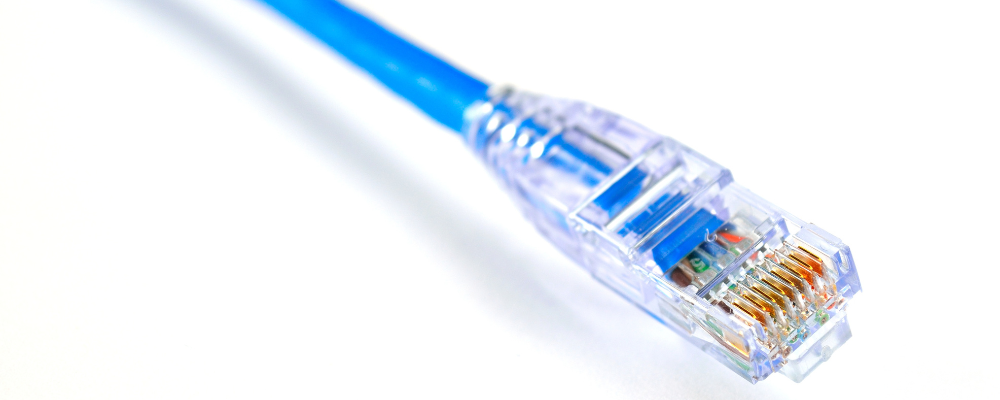
Types of Ethernet Cables
Coaxial cables: It carries high-frequency electric signals with minimum losses and uses 10Base5 and 10Base2 Ethernet variants. It can be:
- Hardline coaxial cable
- RG-6 coaxial cable
- Tri-axial cable
Twisted pair cable: It is a copper wire cable where two insulated copper wires are twisted with each other to reduce crosstalk or interference. It uses 100BASE-T, 10BASE-T, and other newer variants. It can be:
- Shielded twisted pair cable
- Unshielded twisted pair cable
Fiber optic cable: It uses optical fibers made of glass cores that are surrounded by multiple layers of cladding materials that are made of Teflon or PVC. The concept behind these cables is to transmit information in the form of light signals to ensure there is no interference in the signal. It can be:
- Single-mode fiber
- Multi-mode fiber
Leased Line
A leased line is a secure and dedicated communication channel that interconnects two or more applications and sites easily without any disruption. It refers to a service contract between a customer and provider. The dedicated leased line aims to ensure non-stop data flow between two points at a fixed rate.

The usage of leased-line network connectivity is popular on the internet, telephone services, etc. It depends upon the fiber optic cable for fast and high-quality bandwidth. It is generally used to link PCs and servers in offices in various locations, connect to the internet, carry phone calls, and more.
The Leased line connectivity offers faster connection speed, easy access to cloud computing, stronger signal, capability to support HD videos, cost-effectiveness, high security, and low latency facilities.
ISDN
Integrated Services Digital Network (ISDN) is a circuit-switched network system that can easily transmit data over a digital line. For example, if one channel is used as the TCP/IP connection to a single location, the other is used to send a fax to that remote location.
Here, you can transmit voice, data, video, and other network services digitally. This results in better data or voice quality as compared to analog phones. It sets a record of 128 Kbit/s bandwidth in upstream as well as downstream directions.
In simple words, it is the updated version of old-fashioned landlines. Moreover, it adds some digital features into the digital lines to transform the traditional copper telephone line into different digital channels.
Dial-Up Connections
A dial-up connection is a simple form of internet access that uses an analog modem and a standard phone line to transfer data at a rate of 56Kbps. This process is the least expensive but also the slowest connection mode.
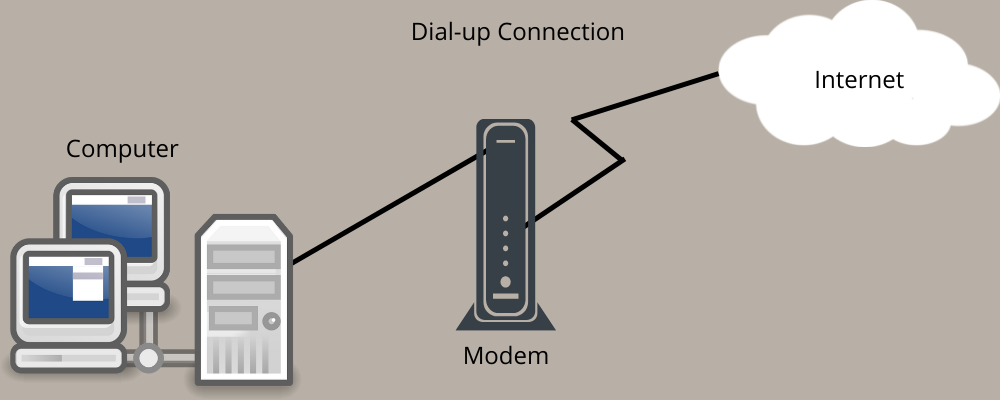
In this type of network connectivity, you need to connect the telephone line to a modem in the computer and insert the other end into a phone jack. Next, you can configure your computer by dialing a number that your ISP has provided you with.
If you have a computer and a modem, you can set up a dial-up connection in no time. Use external or internal modems, but both can be controlled by the software on your computer. You can also ask your ISP to give you a set of telephone numbers so that you can access the internet easily using them.
DSL
Digital Subscriber Line (DSL) is a network connectivity method that offers broadband or high-speed internet connections over your conventional telephone lines. In the late 1980s, Bell Communications Research, Inc explored the feasibility of broadband signals over an American telecommunications network. In the early 1990s, high-bitrate DSL was first introduced into the picture.
Some advantages of using DSL are:
- You can use the phone line for the voice calls while leaving the internet connection open.
- If we compare the speed, you will get a much higher speed with DSL than your regular modem.
- It doesn’t require new wiring; you can use your phone line.
- The company that provides DSL service usually offers a modem as a part of the installation.
VPN
A Virtual Private Network (VPN) is a service that lets you stay online privately. It establishes an encrypted and secure connection between the internet and your computer by providing a private tunnel for all your communications and data whenever you use a public network.

A VPN hides IP addresses and establishes a secure connection between a tablet, computer, or other devices and a VPN server. As a result, no one can spy on your online activities or track you by exploiting your IP address. This way, VPN protects your identity and helps secure your data.
VPN offers many benefits – it improves the functionality, management, and security of your private network. It also enables you to easily access resources inaccessible on a public network for any reason, like geographic restrictions. In addition, it can bypass such restrictions and deliver the content from any site, no matter where you are.
Mobile (3G, 4G, and 5G)
Everyone knows about mobile networks since mobile phones or smartphones are used tremendously throughout the planet.
Mobile connectivity refers to a communication network spread across a vast land area worldwide and connects wirelessly through transceivers known as base stations or cell sites. It works the same way as the old radio signals, which means it also depends on electromagnetic radiation that includes infrared and light waves.
A mobile network is enabled in a physical device that you can carry anywhere. The mobile device consists of a battery that provides power to your phone and supports a specific type of network connectivity – 3G, 4G, or 5G. The terms 3G, 4G, and 5G only refer to the speed of your internet, where ‘G’ means generation of cellular technology.
Furthermore, the number of this generation grows according to their capabilities and further research. For example, with an improved generation, you can expect enhanced speed, which results in low latency. Think about the time when only 2G mobile connectivity was there. Next, 3G came with better speed, and then came 4G and 5G with even better speed and capabilities.
Wireless
A wireless network can be described as a computer network that uses Radio Frequency connections between nodes of a given network. This is commonly used in businesses, telecommunication networks, and homes.

Here, the main intention is to free a user from the cord. Also, a person can move or change the location of the seating area. Wireless connection is just the opposite method of Ethernet cable. It is of four types – wireless MAN, wireless LAN, wireless WAN, and wireless PAN. They differ according to the range, connectivity, and size requirements.
Bluetooth
Bluetooth is a simple network connectivity method that uses short-range wireless technology. This connects two devices:
- Mobile to mobile
- Mobile to PC
- mobile to laptop
- Tablet to PC
- Mobile to tablet, etc.
Furthermore, Bluetooth uses ISM bands, from 2.402 GHz to 2.48 GHz, and UHF radio waves to exchange data between two devices over a short-range. Both Bluetooth and WiFi are short-distance wireless technologies but have certain differences. WiFi is mainly used to connect your devices to a network, but Bluetooth can be used to share the internet or data between devices.
Satellite
The satellite network connectivity method is a widely used internet service that offers a relatively high-speed internet connection in the modern world. It is marked as the new broadband satellite network, which is designed and optimized for broadband connections.
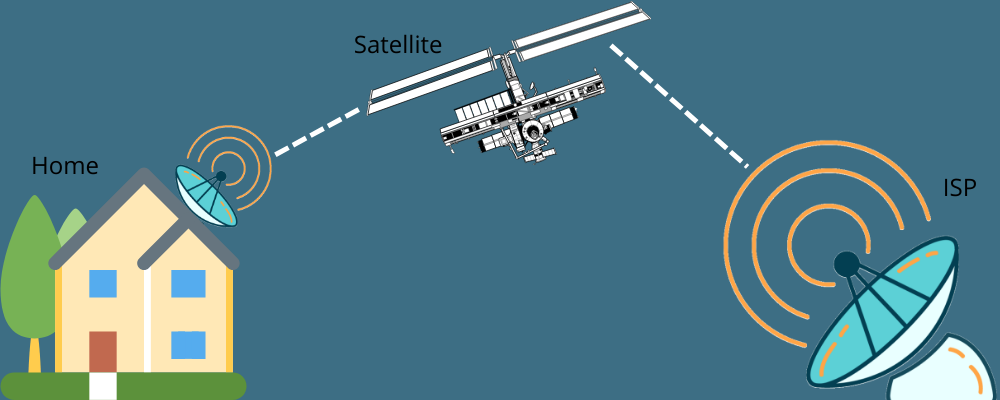
In a satellite network, your internet service provider sends a fiber signal to the satellite in space. The satellite then sends back your signal to your satellite dish, which is connected to your modem. This connection offers faster speed and is priced better in most cases.
Conclusion
The modern world has a lot of options for network connectivity. Whether wired or wireless, each technology has its own set of benefits. So, to get the optimum network, choose the best network connectivity method for your organization based on your needs.
If you are a beginner in the world of computer networks, you may look at this article on introduction to computer networks.
Si quiere puede hacernos una donación por el trabajo que hacemos, lo apreciaremos mucho.
Direcciones de Billetera:
- BTC: 14xsuQRtT3Abek4zgDWZxJXs9VRdwxyPUS
- USDT: TQmV9FyrcpeaZMro3M1yeEHnNjv7xKZDNe
- BNB: 0x2fdb9034507b6d505d351a6f59d877040d0edb0f
- DOGE: D5SZesmFQGYVkE5trYYLF8hNPBgXgYcmrx
También puede seguirnos en nuestras Redes sociales para mantenerse al tanto de los últimos post de la web:
- Telegram
Disclaimer: En Cryptoshitcompra.com no nos hacemos responsables de ninguna inversión de ningún visitante, nosotros simplemente damos información sobre Tokens, juegos NFT y criptomonedas, no recomendamos inversiones
